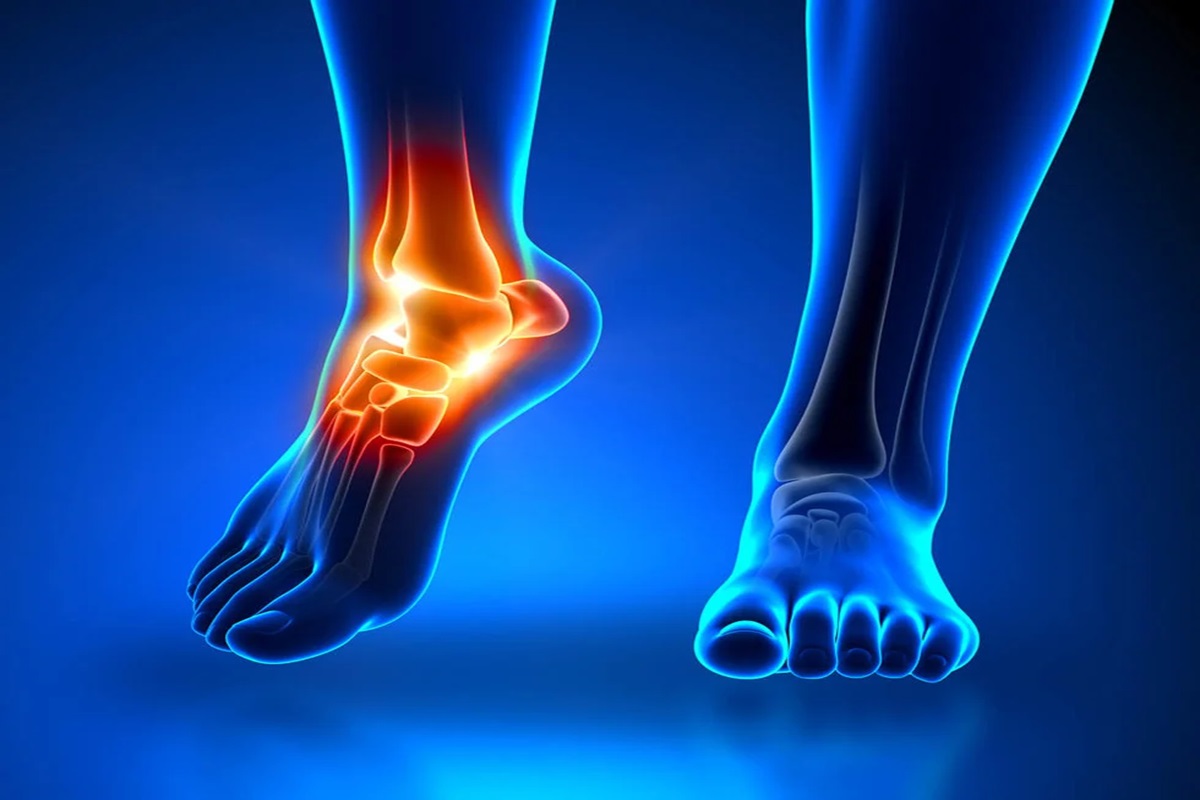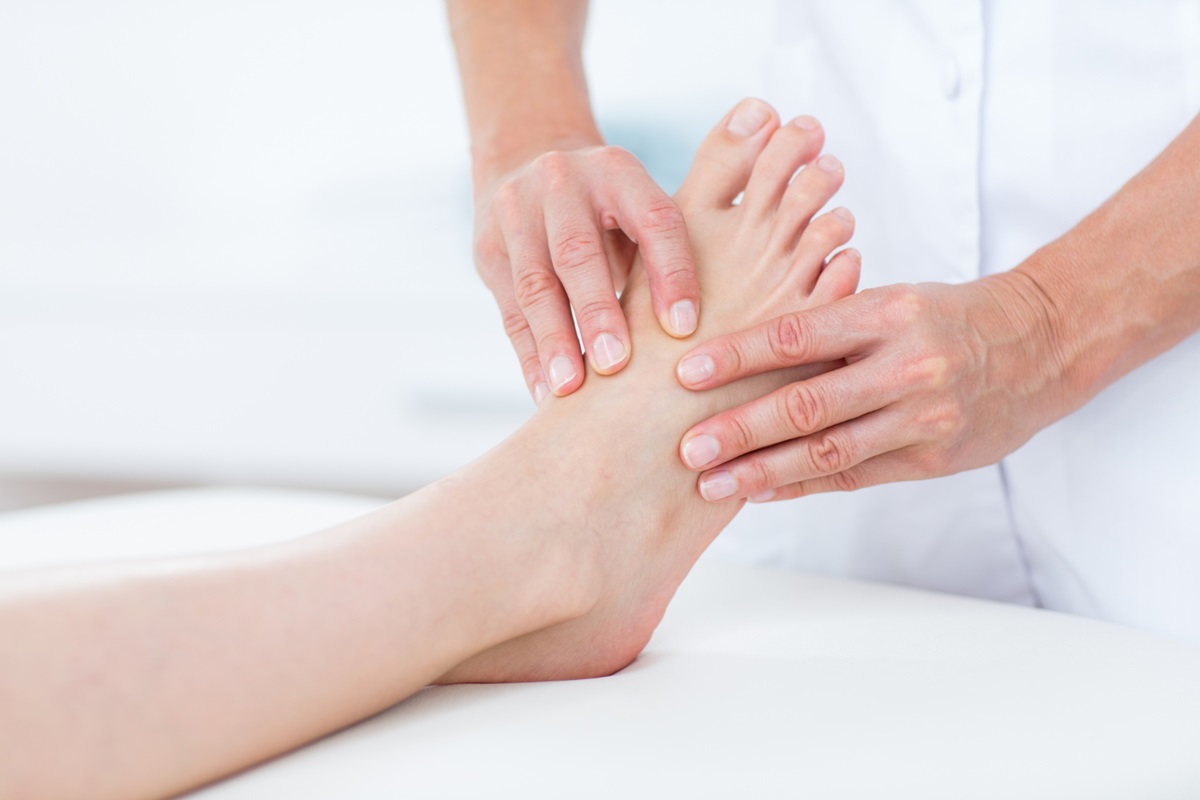An anterior talofibular ligament tear is one of the most common ankle injuries, especially among active individuals and athletes. Whether caused by a misstep on uneven terrain or a collision in sport, this type of injury can significantly impair mobility. Understanding how the anterior talofibular ligament functions, what causes damage, and how to recover is critical for restoring strength, reducing chronic ankle instability, and preventing long-term complications.
What Is the Anterior Talofibular Ligament? Anatomy & Function
The anterior talofibular ligament (ATFL) plays a crucial role in maintaining ankle stability. It is part of the lateral ankle ligaments that support the joint and prevent excessive motion. Understanding its anatomy explains why it’s especially prone to injury during ankle inversion events.
Location & Role Among Ankle Ligaments
The ATFL runs from the fibula to the talus, crossing the outer aspect of the ankle joint. It works alongside the calcaneofibular ligament (CFL) and the posterior talofibular ligament (PTFL) to form the lateral collateral ligament complex. These ankle ligaments stabilize the ankle mortise, particularly during plantar flexion and inversion.
Why the ATFL Is Most Susceptible to Inversion Injuries
The ATFL is the first structure to be affected during an ankle inversion or an ankle roll inward. These movements often happen due to sudden twisting motions, improper landing, catching the outer aspect of the foot, or landing awkwardly on an opponent’s foot. This shift in the center of gravity causes ligament overstretching or even microscopic tearing, leading to a potential anterior talofibular ligament tear.
Causes, Symptoms & When to Suspect an ATFL Tear
Recognizing an anterior talofibular ligament tear early is vital to avoid chronic ankle instability and long-term ligament damage. These tears often result from both high-impact sports and simple missteps in daily life.
Common Mechanism: Inversion Sprains in Sports & Daily Life
The majority of ATFL tears occur due to inversion injuries, often seen in soccer, basketball, or trail running. Situations like slide tackles, direct impact, or landing with extreme pressure increase the risk. Many patients report, “I was just spraining my ankle,” not realizing it may have led to an anterior talofibular ligament tear.
Acute ankle sprains are one of the most frequently treated injuries in both urgent care settings and general medical practices. They can lead to considerable short-term discomfort, functional limitations, and an increased likelihood of reinjury. Without proper treatment, these injuries may progress to long-standing instability and impaired ankle mechanics.
Signs: Pain, Swelling, Bruising & Instability
Classic symptoms include pain and swelling on the outer ankle, ecchymosis (bruising), and a popping sensation at the time of injury. There is often point tenderness over the ATFL, limited range of motion, and pain with weight-bearing. In more severe cases, instability and prolonged discomfort signal a complete rupture or grade 3 ATFL injury.
Diagnosis: Clinical Exams, Stress Testing & Imaging Options
Healthcare providers use the anterior drawer test and talar tilt test to assess joint laxity and ligament overstretching. Physical examination, edema measurement, and figure-8 measurement help gauge swelling. X-rays rule out fractures, while MRI, ultrasound, or other imaging tests confirm soft tissues and ligaments injury severity.
Grading Severity & Expected Recovery Timelines
Grading the injury helps set realistic expectations for anterior talofibular ligament tear recovery time. Treatment and rehab protocols vary by severity, with early intervention leading to better outcomes.
Grade I Stretch: Mild, 1–3 Weeks Recovery
Grade 1 ATFL injuries involve minor stretching with minimal tearing. You may feel slight tenderness and swelling, but there’s no joint instability. Recovery typically takes 1–3 weeks with rest and ice, range-of-motion exercises, and light stretching.
Grade II Partial Tear: 4–6 Weeks, Bracing & PT
A grade 2 ATFL injury features partial tearing, moderate edema, and noticeable instability during activity. Recovery includes immobilization with braces or boots, electrical stimulation (TENS), and physical therapy for ankle strength. Expect a recovery timeline of 4 to 6 weeks.
Grade III Complete Tear: 8–12+ Weeks, Possible Surgery
A complete rupture or grade 3 ATFL injury results in severe pain, joint looseness, and high risk of chronic ankle instability. Surgical repair might be needed. Anterior talofibular ligament tear recovery time extends to 12 weeks or longer, involving comprehensive rehabilitation programs.
At‑Home First Steps After Injury

Immediate action following an ankle injury plays a critical role in controlling damage and improving long-term outcomes. These early interventions can reduce swelling, promote healing, and limit the impact of an anterior talofibular ligament tear.
PRICE Protocol: Protection, Rest, Ice, Compression, Elevation
Follow the R.I.C.E. method, especially within the first 48–72 hours. Protection with crutches or a semirigid orthosis, rest and ice every few hours, compression bandage, and leg elevation all help limit swelling and bruising. These steps are essential regardless of injury grade.
Early Motion: Safe Range‑of‑Motion Exercises to Limit Stiffness
Begin gentle range-of-motion exercises like ankle circles and foot flexion once the pain subsides. These reduce stiffness and prevent impaired ankle function. Incorporating soft tissue techniques and light stretching also helps during early stages.
When to Use Bracing or Immobilization
A brace or walking boot supports healing, especially in grade 2 and grade 3 ATFL injuries. Bracing prevents further ligament damage and allows early weight-bearing as tolerated. Always follow up with an orthopedic doctor or Speak with a PT for custom bracing timelines.
Physical Therapy’s Role in Optimal Healing
Physical therapy is the cornerstone of recovery for any anterior talofibular ligament tear. An individualized program speeds up healing and reduces the chance of recurring sprains.
Root‑Cause Assessment by Skilled PTs
At Backcountry Physical Therapy, therapists perform a detailed ankle stability assessment, checking for joint laxity, muscular imbalances, and gait abnormalities. Identifying the source of instability helps tailor treatment and avoid reinjury. A physical examination is always the first step.
Hands‑On Techniques: Joint Mobilization & Manual Therapy
Joint mobilization and manual therapy improve mobility, reduce pain, and correct musculoskeletal dysfunction. These hands-on methods target stiffness and encourage healing in both soft tissues and ligaments.
Therapeutic Exercises: Strength, Proprioception & Functional Rehab
Rehab includes rehabilitation exercises for muscle endurance, proprioception, and agility. Patients practice balance exercises, multi-directional sports-specific proprioceptive training, and strengthening exercises for long-term stability. These are core components of effective Physical Therapy for Ankle Strength.
Coordinated Return‑to‑Sport Protocols & Injury Prevention
Returning to activity safely involves progressive rehabilitation protocols and functional testing. Gradual exposure to sport movements and agility training are essential to restore confidence. PTs also educate on avoiding uneven surfaces and maintaining healthy weight.
When Surgery or Advanced Intervention Is Needed
While most anterior talofibular ligament tears heal without surgery, persistent instability may need operative care. Surgical repair is common in elite athletes or patients with chronic ankle instability.
Indications for Broström Procedure & Chronic Instability
Surgery such as the Broström procedure is indicated for repeated sprains or failed conservative care. This involves tightening the ATFL and sometimes reinforcing other ankle ligaments. Post-op protocols are structured and timeline-driven.
Post‑Surgical Rehab: Phased PT Approach to Full Recovery
Rehab after surgery includes protected movement, progressive strengthening, and return-to-sport training. Pulsed ultrasound, electrical stimulation (TENS), and rehabilitation exercises support tissue healing. Anterior talofibular ligament tear recovery time after surgery ranges from 4 to 6 months.
Preventing Recurrence & Protecting Other Ankle Ligaments

Preventative care is just as important as treatment. Strong, balanced ankles lower the risk of future ATFL tears or injury to surrounding ankle ligaments.
Strengthening the CFL, PTFL & Deltoid Group
Reinforcing all lateral ankle ligaments, including the calcaneofibular ligament and posterior talofibular ligament, is crucial. Targeted exercises ensure equal support across the ankle joint. PTs also address deltoid complex strength on the medial side.
Injuries to the anterior talofibular ligament are often accompanied by damage to nearby stabilizing structures. The calcaneofibular ligament (CFL) and the deltoid ligament complex are frequently affected when the ATFL is compromised. This pattern of multi-ligament involvement underscores the importance of a thorough assessment following ankle trauma.
Balance, Stability, and Biomechanics Training
Proprioceptive rehabilitation retrains your body’s ability to sense joint position. This includes balance training, stretching, and agility work. Improving mechanics prevents ligament overstretching and recurrence.
Footwear and Surface Considerations to Reduce Risk
Using supportive footwear and avoiding unstable terrain are simple ways to reduce stress on healing ligaments. Choose shoes that support lateral motion and cushion against direct impact. A PT can guide appropriate gear selection.
Why Backcountry Physical Therapy Excels in ATFL Care
Healing from an anterior talofibular ligament tear is easier with expert help. Backcountry Physical Therapy offers a complete approach, from diagnosis to performance.
One‑on‑One PT Sessions Focused on Ankle Stabilization
Our sessions include 60-minute, one-on-one treatments targeting ankle function and ligament repair. This individualized care reduces downtime and speeds up recovery.
Personalized Programs for Outdoor Athletes & Active Lifestyles
From skiers to runners, our clients benefit from sport-specific recovery plans. Programs include multi-directional agility, muscle strengthening, and dynamic rehab.
Transparent Treatment Plans, Pricing & 24‑Hour Support
Clients know exactly what to expect at every phase. Our pricing is straightforward, and our Speak with a PT option offers real-time answers anytime.
Conclusion
If you’re experiencing ankle instability or suspect an anterior talofibular ligament tear, don’t delay care. Early diagnosis and structured rehab lead to shorter anterior talofibular ligament tear recovery times and fewer complications. Let Backcountry Physical Therapy be your partner in getting back to full mobility, strength, and confidence.
FAQs
Can you walk with a torn anterior talofibular ligament?
You may be able to walk, but it is often painful and unstable. Supportive bracing and evaluation are advised to prevent worsening the injury.
Can an ATFL heal on its own?
Mild to moderate tears can heal with rest and physical therapy. Severe or recurrent cases may require surgical repair.
What does an ATFL tear feel like?
Common symptoms include a popping sensation, sharp pain on the outer ankle, swelling, and instability during motion. Many report difficulty with weight-bearing and range of motion.



